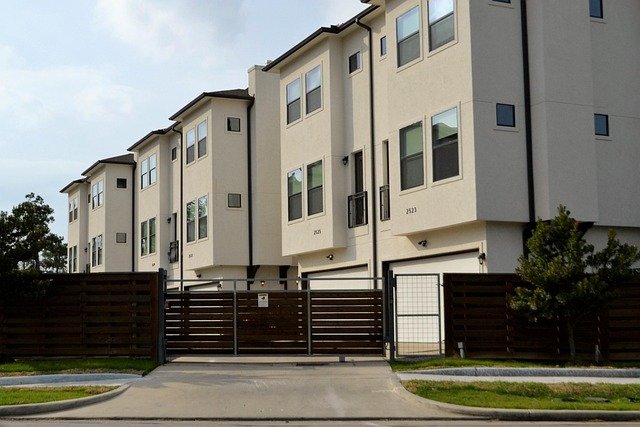Best Housing Projects Under Construction: Discover the Top New Real Estate Developments
The demand for housing projects under construction is growing rapidly as buyers seek modern amenities, smart layouts, and strong investment potential. Whether you’re searching for new real estate projects near me, exploring residential projects nearby, or looking for affordable housing near me, the market today offers unmatched options for every budget. This guide reviews the top new township projects and explains how to choose developments that promise both comfort and long-term value appreciation.

The real estate market continues to expand with numerous housing projects under construction nationwide. These new developments represent the future of residential living, incorporating cutting-edge design, technology integration, and community-focused amenities. For homebuyers and investors alike, these emerging properties offer opportunities to secure modern living spaces before completion, often at pre-construction pricing advantages. Understanding the landscape of new real estate developments can help potential buyers make informed decisions about where to invest their resources for long-term satisfaction and potential appreciation.
The Rising Demand for Modern Housing Projects
The demand for newly constructed housing has seen significant growth in recent years, driven by several key factors. Homebuyers increasingly seek properties with modern conveniences, energy-efficient features, and smart home technology—elements more commonly found in new constructions than existing properties. Additionally, the pandemic has shifted housing preferences toward more spacious layouts, dedicated home offices, and outdoor living spaces, which developers are incorporating into their newest projects.
Demographics also play a crucial role in this rising demand. Millennials entering their prime homebuying years often prefer move-in ready properties with contemporary designs over older homes requiring renovation. Meanwhile, downsizing baby boomers are looking for maintenance-free living with high-end finishes in convenient locations. Developers are responding to these diverse needs by creating varied housing options within single communities, from apartments and townhomes to single-family residences.
Key Factors to Consider When Choosing a New Real Estate Project
When evaluating housing projects under construction, location remains paramount. Proximity to employment centers, quality schools, healthcare facilities, and recreational amenities significantly impacts both livability and future property values. Infrastructure development around the project, including planned roads, public transportation extensions, and commercial centers, can indicate an area’s growth potential.
Developer reputation should also factor heavily into decision-making. Researching a developer’s track record for quality construction, on-time delivery, and post-completion support provides valuable insight into what to expect. Reviewing their previously completed projects can reveal consistency in design execution and construction standards. Additionally, understanding the developer’s financial stability is crucial, as it affects their ability to complete the project as promised without cutting corners or facing delays.
The legal aspects of purchasing pre-construction property deserve careful attention. Buyers should thoroughly examine contracts for contingency clauses, completion timelines, and specifications regarding finishes and fixtures. Having a real estate attorney review these documents can help identify potential issues before making a commitment.
Affordable Housing Options Redefining Urban Accessibility
The concept of affordable housing has evolved significantly in recent years. Modern affordable housing projects are increasingly designed to blend seamlessly into neighborhoods, offering quality construction and amenities while remaining within reach for middle-income families. Many new developments include a percentage of units designated as affordable housing, creating diverse communities where residents of varying income levels can access similar amenities and services.
Government initiatives and public-private partnerships are helping drive this trend, with tax incentives encouraging developers to include affordable units in their projects. In urban areas, transit-oriented developments located near public transportation hubs make city living more accessible while reducing reliance on personal vehicles. These projects often feature smaller, efficiently designed units that maximize livability while keeping costs manageable.
Innovative financing options are also expanding accessibility to new housing developments. Rent-to-own programs, shared equity models, and first-time homebuyer assistance programs help bridge the gap for those who might otherwise be unable to purchase in new communities.
The Growth of New Township Projects for Integrated Living
Township projects represent one of the most significant trends in contemporary real estate development. These master-planned communities integrate residential, commercial, educational, and recreational spaces into cohesive environments designed to enhance quality of life. By incorporating schools, retail centers, healthcare facilities, and office spaces within walking distance of residential areas, these developments reduce commute times and foster stronger community connections.
These self-contained communities often feature extensive green spaces, walking trails, and community centers that encourage interaction among residents. Many newer township projects emphasize sustainability through features like solar power integration, water recycling systems, and energy-efficient building designs. This holistic approach to development creates environments where residents can live, work, and play without leaving their community.
The township model has gained popularity in suburban areas where land availability allows for large-scale planning. These developments often unfold in phases over several years, with infrastructure and amenities expanding as the resident population grows.
How to Evaluate Investment Potential in Residential Projects
Assessing the investment potential of housing projects under construction requires analyzing both current market conditions and future growth indicators. Price trends in the surrounding area, planned infrastructure improvements, and commercial development can signal appreciation potential. Properties in emerging neighborhoods often offer greater upside but come with increased risk compared to established areas.
For investors specifically, understanding the rental market dynamics is essential. Factors such as local employment growth, university proximity, and area development plans affect rental demand. New construction typically commands premium rents due to modern amenities and finishes, though investors should research comparable properties to ensure projected rental income aligns with market reality.
| Investment Factor | Importance | Evaluation Method |
|---|---|---|
| Location Growth Potential | High | Research area development plans, job growth trends, and infrastructure projects |
| Builder Reputation | Medium | Review previous projects, check customer satisfaction ratings, verify completion timelines |
| Amenities & Features | Medium | Compare with competing properties, assess uniqueness and appeal to target renters |
| Price Per Square Foot | High | Benchmark against similar properties in established nearby areas |
| Projected Rental Yield | High | Calculate potential rental income against purchase price and ongoing costs |
Prices, rates, or cost estimates mentioned in this article are based on the latest available information but may change over time. Independent research is advised before making financial decisions.
Pre-Construction Purchase Considerations and Timeline
Buying property during the construction phase presents unique considerations. The typical timeline from reservation to possession can span 18-36 months depending on project scale. During this period, buyers should prepare for scheduled payment milestones tied to construction progress rather than making a single lump-sum payment.
Regular site visits during construction help ensure the project is progressing as promised and provides an opportunity to address any concerns directly with the developer. Documenting these visits with photos can be valuable if discrepancies arise later. Buyers should also understand their rights regarding construction delays or material changes to the promised specifications.
The final stages before possession involve a thorough inspection of the completed property, documentation of any deficiencies, and confirmation that all promised features and finishes have been delivered according to contract. Many jurisdictions require developers to provide warranties on new construction, covering structural elements and major systems for defined periods after completion.




